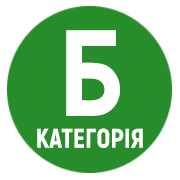МЕТОДИЧНИЙ ПІДХІД ДО КЛАСТЕРИЗАЦІЇ РЕГІОНІВ КИТАЮ ЗА СТУПЕНЕМ ПРОЯВУ КОНКУРЕНТНИХ ПЕРЕВАГ
Abstract
У статті запропоновано кластеризацію, суть якої полягає у групуванні регіонів Китаю за ступенем прояву їх конкурентних переваг за технологічно-інноваційними, освітньо-інтелектуальними, економіко-інфраструктурними, туристично-культурними групами. Методичний підхід дозволів до оцінки територій полягає не лише з боку адміністративного поділу, він визначає конкретні території, які можуть мати схожі стратегії маркетингового менеджменту з метою досягнення високого ступеня конкурентної переваги та впливу на конкурентоспроможність регіону в цілому. Управління конкурентними перевагами регіонів з урахуванням кластерного підходу дозволяє не тільки більш повно та конкретно оцінити поточну ситуацію, але й ефективно використовувати ресурси, необхідні для гармонійного розвитку. Застосування кластерного підходу в координації діяльності територій дозволить створити якісний конкурентоспроможний територіальний бренд, що матиме позитивні наслідки в соціальній, економічній та інших сферах життя суспільства.
References
Flint, G. F. (2000), “What is the meaning of competitive advantage?”, Advances in Competitiveness Research, Vol. 8 No. 1, pp. 121–129.
Powell, T. C. (2001), “Competitive advantage: logical and philosophical considerations”, Strategic Management Journal, Vol. 22 No. 9, pp. 875–888. DOI: http://dx.doi.org/10.1002/smj.173
Lambin, J. J. (1997, January 1). Strategic Marketing Management. In-Text Citation: (Lambin, 1997). DOI: https://doi.org/10.1604/9780077092276
Grimm, C. M., Lee, H., Smith, K. G. (2006), Strategy as action. Competitive dynamics and competitive advantage, Oxford University Press, New York.
Wang, H. (2014). Theories for competitive advantage. In H. Hasan (Eds.), Being Practical with Theory: A Window into Business Research (pp. 33-43). Wollongong, Australia: THEORI.
Bain, J (1968), Industrial Organization, John Wiley and Sons, New York.
Evans, C (2003), Managing for Knowledge: HR’s Strategic Role, Butterworth-Heinemann, Amsterdam.
Hamel, G& Prahalad, C. (1994), Competing for the Future, Harvard University Press, Boston.
Beckmann, TJ (1999), ‘The current state of knowledge management’, in J, Liebowitz, (ed.),Knowledge Management Handbook, CRC Press, Boca Raton, pp. 1-22.
Aria, M., & Cuccurullo, C. (2017, November). bibliometrix : An R-tool for comprehensive science mapping analysis. Journal of Informetrics, 11(4), 959–975. DOI: https://doi.org/10.1016/j.joi.2017.08.007
Zupic, I., & Čarter, T. (2014). Bibliometric Methods in Management and Organization. Organizational Research Methods, 18(3), 429–472. DOI: https://doi.org/10.1177/1094428114562629
Porter, M. E. (1990). The Competitive Advantage of Nations. Harvard Business Review, 68(2), 73–93.
Jardon, C. M., & Susana Martos, M. (2012, October 19). Intellectual capital as competitive advantage in emerging clusters in Latin America. Journal of Intellectual Capital, 13(4), 462–481. DOI: https://doi.org/10.1108/14691931211276098
Jardon, C. M. (2015, November). The use of intellectual capital to obtain competitive advantages in regional small and medium enterprises. Knowledge Management Research & Practice, 13(4), 486–496. DOI: https://doi.org/10.1057/kmrp.2014.4
Danko, Y. I., & Reznik, N. P. (2019). Contemporary challenges for China and Ukraine and perspectives for overcoming these challenges. Global Trade and Customs Journal, 14(6).
Nifatova, O., Ladyka, V., Hryshyna, Y., & Danko, Y. (2023). Agricultural education in times of war: Strategic visions, leadership practices and post-war reconstruction. Problems and Perspectives in Management, 21, 87–97.
Zen, A. C., Bittencourt, B. A., Hervas-Oliver, J. L., & Rojas-Alvarado, R. (2022, April 3). Sustainability-Oriented Transition in Clusters: A Multilevel Framework from Induction. Sustainability, 14(7), 4265. DOI: https://doi.org/10.3390/su14074265







